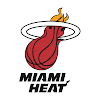Part of the Fiat Group since the mid eighties, the Italian Alfa Romeo Car Company was created in 1910 in Milan. Originally the Societa Anonima Italiana Darracq (SAID) company, the group was first founded in 1906 and was located in Naples. Behind the group was the French Alexandre Darracq firm, and Italian investors, with Alexandre Darracq later deciding to move the company to Milan, where a new eight thousand square yard factory was created to house the new automobile company. One of the Italian investors, the aristocrat Ugo Stella, decided to form the new A.L.A.F Company due to lagging sales of the Italian Darracq cars.
Hiring the designer Giuseppe Merosi to design the new A.L.F.A cars proved a success, with the first car being a 1910 24 HP. The car was raced in the Targa Florio in 1911, driven by Franchini and Ronzoni. The production of cars by the A.L.F.A and Darracq partnership ceased for three years shortly after, with the start of World War One present. Nicola Romeo, the Neapolitan entrepreneur, began to direct the company in 1915, producing various components for the Italian military. Profiting from the production of war hardware, Romeo ploughed his money back into his company portfolio after the war had finished, adding various railroad carriage plants. Although Romeo has less interest in producing cars, the company began to produce automobiles again due to the car parts still in the company's possession, enough to produce well over one hundred cars. Romeo changed the company name to Alfa Romeo in 1920, with new cars displaying the new badges. Producing many successful road and racing cars, Alfa Romeo retained Giuseppe Merosi as the head designer.
Giuseppe Merosi was replace as the chief designer at Alfa Romeo by Vittorio Jano, a previous Fiat designer, who was persuaded to move over to the Alfa Romeo by Enzo Ferrari, the Alfa Romeo racing driver. Penning the designs for the winning grand prix world championship cars in 1925, and designing a run of successful medium sized production cars, saw Vittorio Jano designs as quick, powerful and well engineered cars.
Falling to financial free fall after the war contracts had ended, Nicola Romeo parted with the company, leaving the government to intervene in the market place to save the manufacture. The company continued to make high end exotic cars for wealthy clientele. World War Two saw the factory bombed, shattering the company's finances, which resulted in Alfa Romeo in desperate times, unable to produce a company profit. The time for mass production of smaller and less luxurious cars was on the cards, seeing the introduction of the Giuliette series of cars.
Reference: www.ezinearticles.com
Subscribe to:
Post Comments (Atom)















































0 comments:
Post a Comment